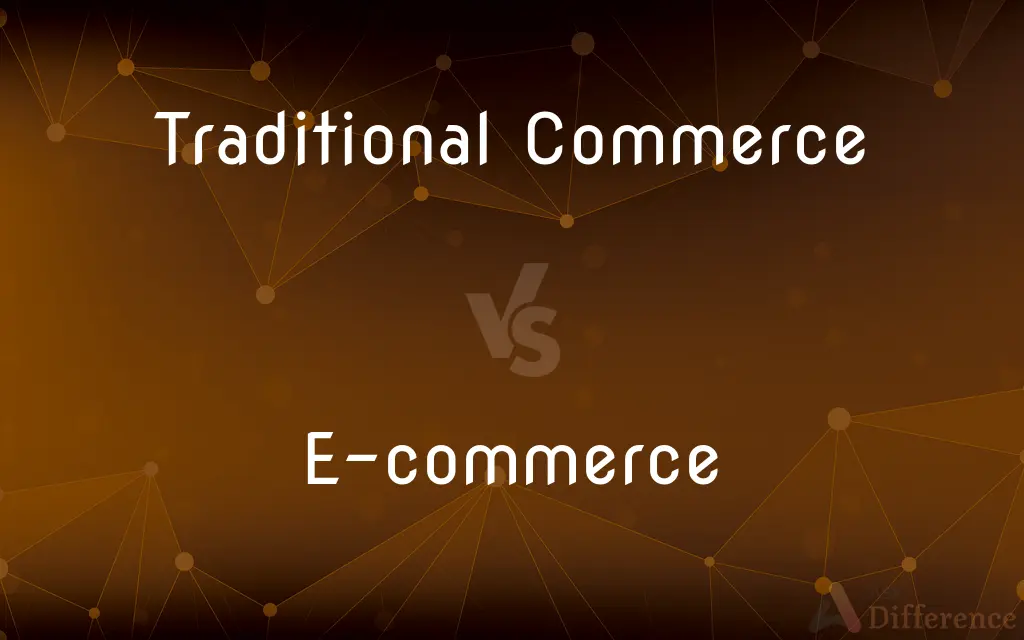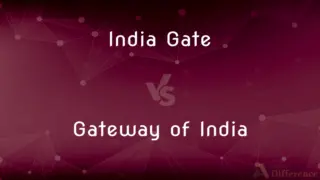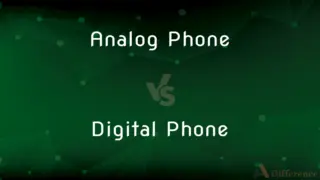Traditional Commerce vs. E-commerce — What's the Difference?
By Tayyaba Rehman — Published on November 28, 2023
Traditional Commerce involves buying and selling in physical stores, while E-commerce revolves around online transactions. Both represent different modes of trading products and services.

Difference Between Traditional Commerce and E-commerce
Table of Contents
ADVERTISEMENT
Key Differences
Traditional Commerce refers to the conventional method of conducting business, typically through brick-and-mortar stores. This form allows customers to physically see, touch, and feel the products before making a purchase. E-commerce, on the other hand, operates in the digital realm, allowing consumers to shop and buy items online.
E-commerce uses technology to bring a more extensive range of products to consumers, often from global suppliers, with the convenience of shopping from anywhere with an internet connection. Conversely, Traditional Commerce is location-based, meaning customers must visit a physical location to make a purchase.
Traditional Commerce offers direct human interaction during a transaction, which can aid in building trust and relationships between customers and sellers. E-commerce, meanwhile, relies heavily on user reviews, ratings, and digital communication methods to build consumer trust.
E-commerce platforms often have advanced tracking, analytics, and personalized marketing strategies, tailoring user experience based on individual behaviors and preferences. In contrast, Traditional Commerce usually employs broader marketing tactics, such as billboards or TV advertisements, targeting a more general audience.
While E-commerce offers unparalleled convenience and a broad product selection, Traditional Commerce provides sensory experiences, immediate gratification, and in-person service, making each unique in its advantages and limitations.
ADVERTISEMENT
Comparison Chart
Platform
Physical stores and locations
Online platforms and websites
Interaction
Direct human interaction
Digital communication, reviews, and ratings
Location Limitation
Restricted to geographical location
Global reach with an internet connection
Marketing Approach
Broader strategies like TV ads, billboards
Personalized marketing, online ads, and analytics
Purchase Experience
Sensory (see, touch, feel products)
Virtual with images, videos, and descriptions
Compare with Definitions
Traditional Commerce
Trading products and services face-to-face.
Traditional Commerce allows customers to try out products in-store before buying.
E-commerce
Business transactions conducted over the internet.
I bought my latest laptop via E-commerce, and it arrived in two days.
Traditional Commerce
Business transactions conducted in brick-and-mortar locations.
Despite the rise of online shopping, Traditional Commerce remains popular in many downtown areas.
E-commerce
Electronic means to facilitate business transactions.
The pandemic accelerated the growth and acceptance of E-commerce globally.
Traditional Commerce
The classic approach to buying and selling goods.
While I love online shopping, there's something special about the atmosphere of Traditional Commerce in a bustling city.
E-commerce
Trading goods and services through digital channels.
With E-commerce, I can order products from another country effortlessly.
Traditional Commerce
Sales interactions without digital means.
Many local farmers' markets operate purely on Traditional Commerce principles.
E-commerce
Online platforms for buying and selling products.
E-commerce has made holiday shopping much more convenient.
Traditional Commerce
A method of business through physical storefronts.
Many people still prefer the tactile experience of Traditional Commerce when buying clothes.
E-commerce
Web-based platforms allowing virtual storefronts.
E-commerce sites often provide special deals during Black Friday and Cyber Monday sales.
E-commerce
Commerce that is transacted electronically, as over the internet.
E-commerce
Commercial activity conducted via the Internet.
E-commerce
2005|year=2006|publisher=Apress|page=xxi|pageurl=https://books.google.com/books?id=4ShE_7yml28C&pg=PR21&dq=%22e-commerce%22+web&hl=&cd=20&source=gbs_api#v=onepage&q=%22e-commerce%22%20web&f=false|isbn=978-1-4302-0079-6|passage=The last thing you need to do before launching the e-commerce site is enable credit card processing.}}
Common Curiosities
Can a business operate using both Traditional Commerce and E-commerce models?
Yes, many businesses have both physical stores and online platforms to reach a broader audience.
Which offers a more personalized shopping experience?
E-commerce platforms often provide personalized recommendations based on user behavior, while Traditional Commerce offers tailored in-person service.
What is Traditional Commerce?
Traditional Commerce refers to the conventional method of conducting business, usually through physical stores.
How do marketing strategies differ between them?
E-commerce relies heavily on online advertising and email campaigns, while Traditional Commerce might use print ads, TV commercials, and in-store promotions.
Which is more cost-effective for businesses?
E-commerce generally has lower overhead costs, but Traditional Commerce can offer advantages in building in-person customer loyalty.
How have consumer expectations changed with the rise of E-commerce?
Consumers now expect a broader product selection, faster delivery, and the convenience of 24/7 shopping due to E-commerce.
How has E-commerce impacted Traditional Commerce?
E-commerce has introduced competitive pricing and global product availability, challenging Traditional Commerce to adapt and innovate.
How does E-commerce differ from Traditional Commerce?
E-commerce involves online business transactions, while Traditional Commerce operates through brick-and-mortar stores.
Is one more secure than the other?
Both have their risks; Traditional Commerce may face issues like theft, while E-commerce can encounter cybersecurity threats.
How do returns typically differ between the two?
Traditional Commerce usually allows in-store returns, while E-commerce may require shipping products back, often with provided labels.
Can Traditional Commerce businesses survive in the age of E-commerce?
Yes, by offering unique in-person experiences, superior customer service, and integrating some elements of digital technology.
How do customer reviews play into E-commerce?
Reviews are crucial in E-commerce, helping to build trust and providing insights into product quality and functionality.
What role does technology play in E-commerce?
Technology is foundational to E-commerce, from website design to payment processing and analytics.
How does customer interaction differ between the two?
Traditional Commerce offers direct human interaction, while E-commerce provides digital communication means, often supported by chatbots or customer service emails.
Do all products work well for E-commerce?
While many products are successfully sold online, some items, like high-end luxury goods or items requiring a sensory decision, may benefit more from Traditional Commerce.
Share Your Discovery

Previous Comparison
India Gate vs. Gateway of India
Next Comparison
Analog Phone vs. Digital PhoneAuthor Spotlight
Written by
Tayyaba RehmanTayyaba Rehman is a distinguished writer, currently serving as a primary contributor to askdifference.com. As a researcher in semantics and etymology, Tayyaba's passion for the complexity of languages and their distinctions has found a perfect home on the platform. Tayyaba delves into the intricacies of language, distinguishing between commonly confused words and phrases, thereby providing clarity for readers worldwide.












































